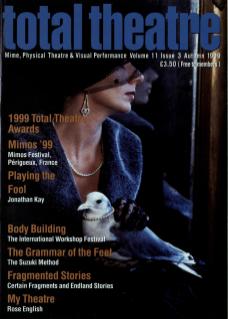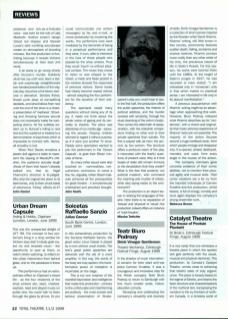This was the unexpected delight of LIFT '99. The concept of four performers living in a shop window for thirteen days didn't initially grab me, but my visit revealed much – the opportunity to peer at them, to watch others watching, to reflect on this urban intervention from behind glass, and on the paradoxes it threw up.
This performance had an extraordinary effect on Clapham's street life – as the four residents of the shop window ate, slept, chatted, washed, read and played music on public view. You could talk to them through the glass by phone. Or you could communicate (via written messages) by fax and e-mail, or (more prosaically) by mouthing the words. The performers’ lives were mediated by the demands of being in a perpetual performance and they were, in turn, able to intervene in the lives of those people who passed by the shop window. Thus they could ‘touch' us without physical contact. The music they chose to listen to was relayed to the street; e-mails and faxes posted in the window showed the responses of previous visitors. Some locals had clearly become repeat visitors – almost adopting the four performers for the duration of their residency.
The spectacle raised many questions without losing any of its joy. It made me think about the whole notion of gazing and its centrality to theatre. The piece was absolutely of our media age – exposing the private. Passing children seemed to regard it without surprise, as if it were just another TV show. Clearly some spectators wanted to join the performers in the Dream Capsule, to grab their fifteen minutes of fame.
So many other issues were also touched on – commodities, consumerism, commerce, to name a few. So, arguably, Urban Dream Capsule achieved all the prerequisites for great theatre – it simultaneously entertained and provoked thought.

